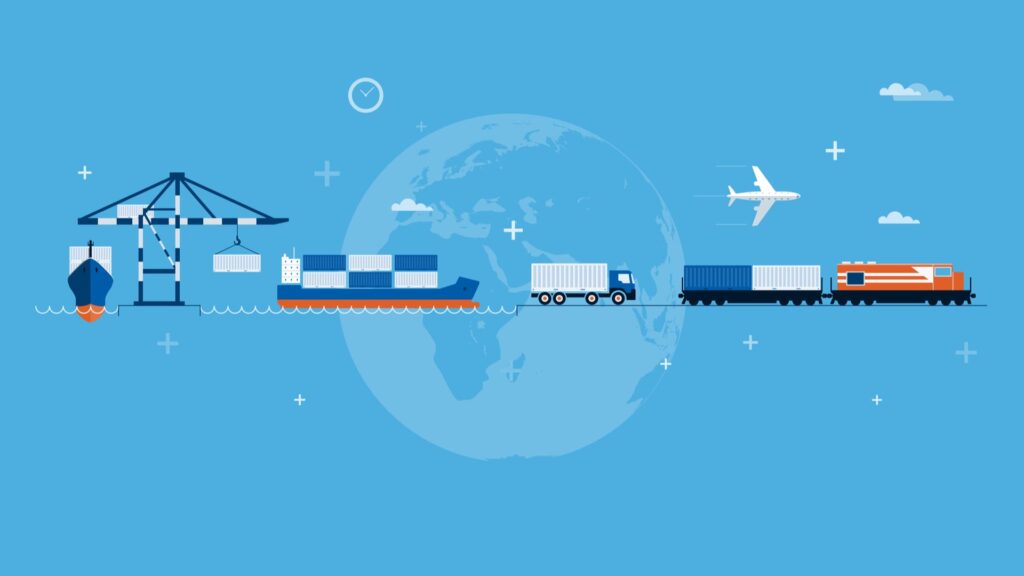Explore techniques for optimizing and automating internal logistics to maximize resources and increase productivity. The implementation of advanced technologies and improved process management enables companies to reduce costs and enhance operational efficiency.
What is Internal Logistics?
Internal logistics is the central system of business operations, responsible for efficiently managing the flow of materials, information, and resources within an organization. It includes processes such as receiving, storage, inventory management, and preparation for final distribution. It also encompasses personnel coordination, time management, and the optimization of warehouse space usage.
Why is Internal Logistics Optimization Important?
Optimizing internal logistics is not just about efficiency; it is a key strategy for improving profitability and competitiveness. Efficient internal logistics help reduce costs, minimize production times, and enhance customer satisfaction. Companies that prioritize this optimization can respond swiftly to market fluctuations and improve their adaptability to changes in demand.
Why is Internal Logistics Crucial in the Value Chain?
Differences Between Internal and External Logistics
Internal logistics manages processes within the organization, from raw material reception to product preparation for distribution. On the other hand, external logistics handles the movement of products to the final consumer. The efficiency of internal logistics directly impacts the responsiveness of external logistics and the quality of service provided to customers.
Impact on Costs, Time, and Customer Satisfaction
Optimized internal logistics reduce operational times, eliminate waste, and improve inventory management, leading to faster deliveries and lower operating costs. Additionally, it enhances customer experience by providing more accurate and reliable service. The digitization of logistics processes also facilitates demand forecasting and strategic decision-making based on real-time data.
Main Challenges Hindering Internal Logistics Efficiency
Bottlenecks in Daily Operations
Bottlenecks are critical points where operational capacity is insufficient to meet demand, causing delays throughout the supply chain. Identifying and eliminating these obstacles through process optimization and automation is crucial for improving logistics flow. Implementing simulation models can help anticipate these issues and design more effective solutions.
Lack of Real-Time Visibility and Data
The absence of real-time monitoring hinders efficient decision-making. Implementing technological tools that provide a comprehensive view of logistics flow is essential for anticipating problems and improving operational planning. Systems like ERP and WMS (Warehouse Management Systems) enable full control over stock and optimize warehouse space utilization.
Manual Processes and Risk of Human Errors
Excessive reliance on manual processes increases the likelihood of errors, slows down operations, and generates additional costs. Digitalization and task automation help minimize these risks and improve productivity. Training personnel in new technologies is also fundamental for ensuring a smooth transition to automation.
Automation in Internal Logistics
Automated Transport Systems
AGV (Automated Guided Vehicles)
AGVs optimize the internal transport of materials without human intervention, reducing transfer times and accident risks. These systems can operate autonomously in production and storage environments, enhancing operational efficiency.
Conveyor Belts
Modern conveyor belts incorporate sensors and automated control systems to ensure a constant and efficient material flow. Implementing these systems in distribution centers and factories increases productivity and reduces handling costs.
Mobile Robots
Collaborative mobile robots can adapt to different operational environments, improving flexibility and precision in internal logistics. With artificial intelligence, these robots can optimize routes and perform repetitive tasks with a high degree of accuracy.
Identification and Tracking Technologies
RFID
Radio Frequency Identification (RFID) enables automated and real-time tracking of products and materials, enhancing traceability and inventory control. Its implementation reduces losses and improves data accuracy.
Barcodes
An efficient and cost-effective solution for quick product identification and stock control. Integrating barcodes with ERP systems enables more efficient inventory management.
IoT
The Internet of Things (IoT) connects devices throughout the logistics chain, providing real-time data to optimize decision-making. Sensors in warehouses and transportation equipment can detect problems and generate alerts before they impact operations.
Optimization of Algorithms in Internal Logistics
Use of Routing and Resource Allocation Algorithms
Advanced algorithms optimize routes, reduce travel times, and improve resource allocation within internal logistics. These algorithms can dynamically adapt to demand changes and enhance operational efficiency.
Applications of Artificial Intelligence and Machine Learning
AI-based solutions analyze demand patterns, forecast inventory needs, and optimize operational planning. AI also facilitates anomaly detection in logistics processes, reducing response times to unforeseen events.
Simulation Models and Digital Twins for Decision-Making
Digital twins simulate logistics scenarios to anticipate problems and optimize strategies before implementing them in the real environment. This helps reduce operating costs and improve overall supply chain efficiency.
What Are the Tangible Benefits of Optimized Internal Logistics?
Reduced Processing Times and Faster Deliveries
Automating and optimizing internal processes speeds up operations, reducing production and delivery times. This improves customer satisfaction and strengthens a company’s competitiveness.
Cost Savings and Improved Cash Flow
Efficient logistics eliminate waste, lower storage costs, and improve cash flow by accelerating inventory turnover. This allows for better financial planning and greater profitability.
Reduced Errors and Improved Product Traceability
Digitizing internal logistics reduces human errors and enhances traceability, ensuring more efficient and secure product management.
Examples and Applications in Different Industries
Manufacturing and High-Turnover Assembly
Factories integrate automated transport systems and identification technologies to optimize production lines, improving efficiency and reducing operating costs.
Retail Warehouses and Distribution Centers
The use of mobile robots and RFID in warehouses enables efficient inventory management and quick order preparation, ensuring more precise and agile deliveries.
E-commerce Logistics and Peak Demand Management
E-commerce companies employ artificial intelligence and automation to manage demand surges and optimize order processing and shipping. This allows them to handle large order volumes efficiently and accurately.
Optimizing internal logistics not only improves operational efficiency but also strengthens a company’s competitiveness in a dynamic market. Implementing advanced technologies and automation strategies is key to maximizing resources and productivity.
